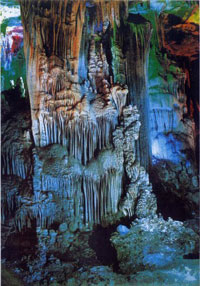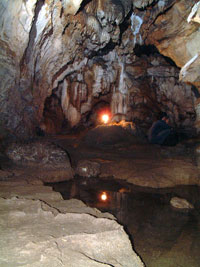  Fun Cave Facts for Kids Fun Cave Facts for Kids
Enjoy our fun cave facts for kids. Understand how caves a formed with our range of interesting information and trivia. Learn where caves can be found, what creatures live in caves, how big a cave system can get, how stalactites and stalagmites are created, the different types of caves that can form and much more. | | |
Caves can be formed by many geological processes including chemical actions, erosion from water, tectonic and volcanic forces, microorganisms, and pressure.
The most common type of cave formation are solutional caves which are formed by natural acids in groundwater dissolving soluble rock such as limestone (or sometimes chalk, dolomite, marble or gypsum).
Primary caves are formed at the same time as the surrounding rock, the most common type are lava tubes. As lava flows downhill the surface cools and hardens, yet underneath, hot lava continues to flow leaving behind a hollow tube.
The world's three longest known cave systems are: Mammoth Cave, Kentucky, USA, 651.8 km (405 mi), Sistema Sac Actun/Sistema Dos Ojos, Mexico, 319 km (198.2 mi), and Jewel Cave, South Dakota, USA, 267.6 km (166.3 mi).
|


|
|